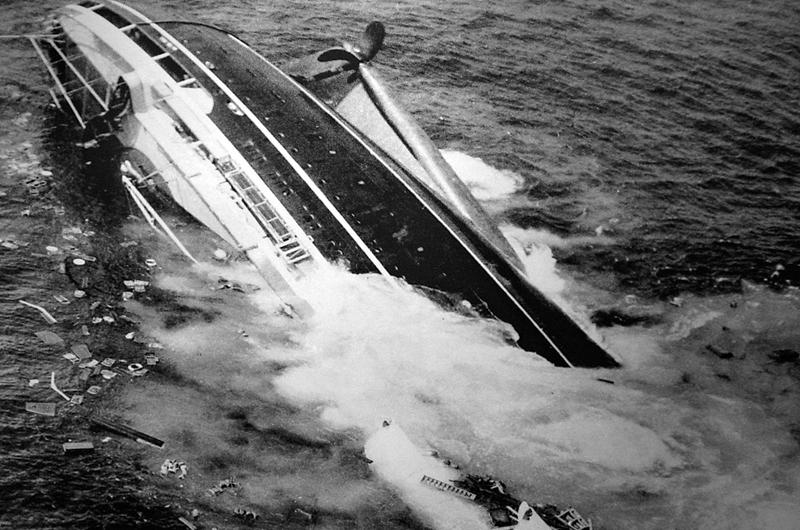Some have called it the Mount Everest of shipwrecks. It’s notoriously hard to reach, located 240 feet below the ocean surface in an area with low visibility and strong currents. Identifiable landmarks have also decayed over time, making navigation harder for divers. Sixteen people have died trying to dive to the site.
But in early June, a manned submersible successfully visited the Andrea Doria, bringing back new sonar images of the wreck. The scans, taken by the Cyclops 1, reveal that the ship may be decaying at an increasing rate. According to OceanGate, the ocean exploration company that operates Cyclops 1, large pieces of the ship may have fallen away entirely.

The wreck was once a luxurious 697-foot Italian ocean liner with three outdoor swimming pools. On July 25, 1956, the Andrea Doria was nearing the end of a voyage from Genoa to New York when she collided with the Swedish ship Stockholm, whose bow sliced through the starboard side of the Italian liner. The cause of the collision was disputed – the steamship companies settled out of court and the settlement was never released – but the ships had been sailing through a patch of fog in the waters some seventy miles southeast of the Vineyard.
Fifty-one people died, forty-six from the Andrea Doria, mostly from injuries sustained during the collision. The rest of the Andrea Doria’s 1,706 passengers, including six Vineyarders, were rescued. Approximately 700 people aboard the Stockholm were also saved.
While the Stockholm made it back to New York, the Andrea Doria took on water, listed, and finally sank below the surface about eleven hours after the collision. Remnants from the liner, including a seaweed-encrusted deck chair and a black suede handbag, were found washed up on Vineyard beaches in the months after.
With the sixtieth anniversary of the wreck approaching, OceanGate was contracted by Argus Expeditions for the first manned submersible trip to the site in more than twenty years. OceanGate’s goal was to assemble a virtual model of the ship to illustrate the wreck and its condition.
Once again, weather played a role in the Andrea Doria’s story. Over the course of three dives in early June, the five-person crew aboard the Cyclops 1 succeeded in conducting seventeen sonar scans of the ship’s bow. The scans revealed that the ship is laying on its starboard side, and that most of the superstructure has collapsed to the sea floor. But later dives to the site were cancelled because of fog and choppy seas, said OceanGate director of media and marketing Joel Perry, who was on the expedition. The fog and choppy water make it hard to see Cyclops 1 as it surfaces.
“Unfortunately, a part of exploration is that Mother Nature dictates oftentimes what we can do,” Perry said.
OceanGate plans to revisit the wreck in the summer of 2017 and beyond to get a fuller picture and comprehensive map of the Andrea Doria. Until then, we’ll just have to wait.
“It seemed appropriate that we were there when it was foggy,” said Perry, “because the fog, I believe, was a major factor in the original sinking.
“Despite the fact that the fog prevented us from diving, it is cool to be on the
water when it is like that...sort of eerie.”




